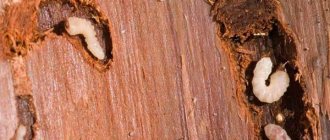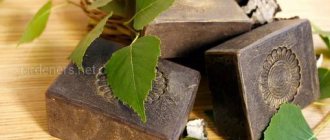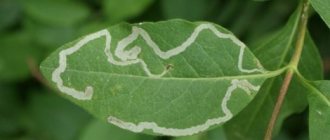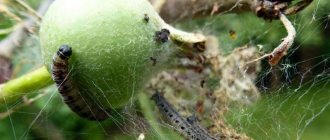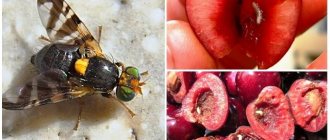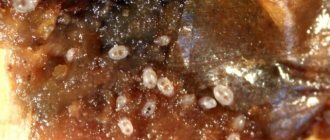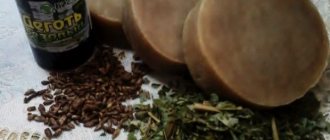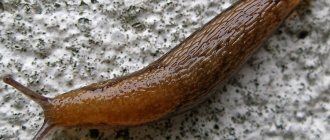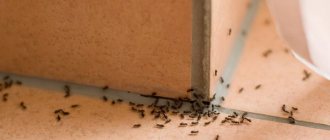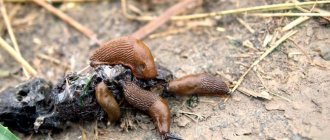Varieties and harmfulness of caterpillars
The process of appearance of worm-like larvae is simple - butterflies lay eggs on the back of leaves or on plant stems, from which caterpillars emerge.
The larvae remain in this form from several days to several years and constantly harm the plant. Depending on what the caterpillars feed on, they are divided into four groups:
- Polyphages - absorbing everything in their path and causing the greatest harm to plantings.
- Monophagous - feeding only on a specific plant.
- Oligophages - eating crops and fruits of one family.
- Xylophagous - destroying bark and wood.
Each group has its most dangerous representatives. Not all caterpillars pose a threat to agricultural crops, however, among them there are such serious parasites that can easily destroy the yield of some vegetables and fruits. The most harmful caterpillars on a summer cottage include the larvae of cabbage moths, cutworms, gypsy moths, lacewings, and leaf rollers. They differ in the type of food, size and color.
Black
Black caterpillars found in the garden can be harmless peacock moth larvae and dangerous larvae of the armyworm and gypsy moth. The offspring of the peacock's eye are frightening in appearance, but practically do not harm most country plants. Black larvae with long spines live mainly on weeds - nettles and thistles. They are less common on raspberry bushes.
In spring and early summer, large colonies of caterpillars can be seen hanging from plants in clusters. A large number of peacock eye larvae can cause damage to raspberry plantings, however, timely processing of berry bushes will help preserve the harvest.
More significant damage to plants is caused by the larvae of the warlike moth, a gray-brown moth-like moth. Black 4-centimeter polyphages can significantly reduce the yield of fruit trees and shrubs. This caterpillar is often found on sunflowers.
The voracious offspring of the gypsy moth can be recognized by their dark color with orange dots. These larvae grow up to 7 cm and eat flowers and leaves of apple trees. If caterpillars are found, they must be exterminated without delay, otherwise you may lose your apples.
Gray
Gray caterpillars with a greasy sheen, growing up to 5 cm, are the larvae of the moth. They appear in two stages, develop quickly over 5-10 days and are so insatiable that in just a few days they can completely deprive the plant of green leaves. The first stage caterpillars hatch from June to July and destroy seedlings of sugar beets, corn and sunflowers. The larvae of the second stage appear from August to September and parasitize mainly on vegetables - potatoes, beets, etc.
In one night, about 5 cutworm caterpillars can destroy a dozen plants.
Greens
Mostly green caterpillars are common in the country. From them appear cabbage whites, raspberry moths, cabbage cutworms, leaf rollers, and onion moths. The ones to be most wary of are female white moths, which lay several hundred eggs per season on cruciferous vegetables. Butterfly caterpillars are very aggressive and voracious; they quickly eat up plants, not allowing a head of cabbage to form, and then move to neighboring plantings.
Cabbage is attacked not only by white moth larvae, but also by cabbage cutworm. Cutworm caterpillars are difficult to detect - they feed mainly at night and hide during the day. Their presence can be judged by the holes on the leaves of vegetables. Another species of butterfly that is dangerous to plants is the leaf roller. Two-centimeter polyphagous larvae damage all fruit trees and berry bushes. They can be found on honeysuckle, currants, raspberries, apple trees and pears. If you find a small green worm on a tree, you must immediately treat the plant with a special product.
Onion moth caterpillars develop and parasitize garlic and onions. These tiny insects devour the leaves of bulbous plants, gnaw through the stalks, shoot tissue and penetrate the bulb, which leads to the inevitable death of the plant. Caterpillars that parasitize raspberries and currants, wild shrubs and trees turn into bright green raspberries. Fortunately for gardeners, these beautiful butterflies are quite rare in nature, so they are practically never found in summer cottages.
White
Pale, tiny whiteflies are a source of headaches for gardeners. A small insect systematically destroys a plant at all stages of its development. Larvae and adults of the butterfly feed on vegetable seedlings and leaves of fruit bushes, in particular red and black currants.
Whitish worms can be seen on tomatoes, cucumbers, and peppers. During the growing season of plants, several generations of whiteflies appear, causing significant damage to the crop.
Yellow
Yellow larvae hatch from the eggs of the corrosive woodworm. Caterpillars feed mainly on wood, infect the trunk of plants with bacteria, and gnaw tunnels in the trunk and stem. As a result of the parasitic activity of caterpillars, plant branches become fragile and brittle.
Apple glass caterpillar
In addition to woodworms, xylophages include the offspring of the glass butterfly, which causes serious damage to garden trees. The larvae hatching from eggs laid in the bark gnaw passages in the trunk of the plant, which also disrupts the circulation of sap. Despite their name, glassworm caterpillars also parasitize plums and pears. If you spray the plants in a timely manner immediately after flowering, you can get rid of glass larvae for a long time.
Codling moth caterpillar
There is an opinion among summer residents that for every fruit there is its own codling moth. Apple, plum, pear and barberry trees fall under the attack of butterflies. The larvae of apple and plum moths are the most insidious, as they are oligophages. The danger of codling moth caterpillars is that they damage fruits and young leaves of shoots, causing the entire shoot to die. The worms penetrate the fruits, chew them out from the inside, and then move on to another untouched fruit.
Multi-colored bright caterpillars
Colored hawthorn and lacewing caterpillars pose a serious threat to agricultural crops. The shaggy gray-orange hawthorn caterpillar prefers to parasitize pink-flowered plants - apple trees, rose hips, almonds, and cherries. In a short time, it gnaws out buds, buds and leaves.
Large four-centimeter lacewing caterpillars, attracting attention with their red color with bright orange speckles, are dangerous not only for plants, but also for living beings. The hairs covering the caterpillar's body can cause an allergy attack or cause a burn to the skin.
Kinds
Winter
It lives almost all over the world, with the exception of areas with extremely high or low temperatures.
The wings are up to 3.5-5 cm in size. The hind wings are lighter, the front wings can have a yellowish brick or dirty gray color. Older caterpillars overwinter in the soil at a depth of 20-30 cm. As soon as the soil warms up to +10°C in spring, they move closer to the surface and pupate.
The pupae are red-brown in color and have a pair of spines at the posterior end. The development period of the pupa is up to 30 days. The butterfly year lasts 1.5 months - from late spring to mid-summer.
The butterfly is most active in the evening and at night. A couple of days after birth, females lay yellowish or milky white eggs on plants or in the soil. One female can lay 500-1000 eggs up to 1 cm in size.
Caterpillars are born after 5-14 days. In the first and second instars they live on the reverse side of the leaves. Older individuals crawl into the top layer of soil and only come to the surface at night to feed.
The size of an adult caterpillar reaches 5 cm, the body is shiny, grayish-green in color. By the end of July, the caterpillars climb 3-9 cm into the ground and pupate.
Butterflies of the 2nd generation live from mid-summer to early autumn. In the second half of August, they actively lay eggs in areas that previously contained vegetable or cereal crops.
exclamation point
Butterflies with a wingspan of up to 3-4 cm. The front wings are dirty gray, at the base there is a characteristic spot in the shape of an exclamation mark.
The caterpillars are medium in size, body color is dark gray, length is up to 3 cm.
Ogorodnaya
A common species of butterflies that develops in two generations. In individuals of the first generation, years begin in May, in the second - in early August. The eggs are yellowish-green and are laid in a mound on the back of the leaf.
Butterflies have hind wings of a dirty gray color, while the front wings are brownish-brown. The larvae can be of different colors - from green to dark red, body length - up to 3.2 cm.
Cabbage
The wings reach 5 cm, the front wings have an unusual color - gray-burgundy with dark spots and a milky-white line at the leading edge. Across the wing there is a pair of dark stripes with teeth.
The pupa is dark brown. Usually two generations of butterflies are formed per season.
Insects lay 20-50 dark gray eggs on the underside of the leaves. Most often these are flowering weeds, tobacco, sunflowers, cabbage or beets. After 5-14 days, caterpillars emerge from the eggs, eat the pulp of neighboring leaves and spread further.
In adult individuals, the color of the body is brownish-yellow to greenish-black.
The number of generations of armyworms may depend on the region where they live. Thus, in the northern regions, only one generation has time to form - in the spring, butterflies lay eggs, and in the fall the caterpillars hibernate in order to transform into a butterfly next spring. In the southern regions, where the warm period lasts longer, 2-4 generations of insects have time to form.
What do caterpillars and their larvae eat?
The caterpillar, hatched from the egg, first of all eats its shell, inside which it developed. Most of these creatures are herbivores; they feed on leaves and plant fruits. But there are also predators that eat sedentary insects, scale insects. Unlike butterflies, these insects eat solid food and therefore have strong gnawing jaws. The upper jaw is more powerful; there are teeth with which it chews food.
Insects consume leaves in such a way that it is easy to determine which larvae fed there. Small-sized individuals gnaw only the upper or lower part of the leaf. They leave transparent slits of intact thin skin.
Due to the fact that the hatched larvae immediately begin to feed heavily, the integument, which does not stretch, soon becomes small. The insect is forced to stop feeding for a while and shed its skin. During its life, the caterpillar molts 4-5 times.
Classification of larvae
The digestive tract of these creatures is concentrated at the back and front of the body. This helps you digest food calmly even while moving. Their digestive tract secretes enzymes that help them process food easily. Scientists classify the larvae depending on what the caterpillar eats.
Polyphages - eat plants
These insects are polyphagous, as they consume any plant for food, indiscriminately. These include moths (moth, wine hawk moth, peacock eye). The advantage of polyphages is that they exist with an unstable food supply. Weakness: poor digestion of food.
Oligophagous - eat plants of a certain type
They prefer to eat one type of plant, one family or type, and do not allow mixing. These include the polyxena species, which feeds only on some of the genus Kirkazon, and the Mahayana larvae only on celery. Or the codling moth, which eats apples and plums.
Monophagous - eat a strictly specific type of plant
These are the most selective individuals who prefer to eat one type of plant. An example is the silkworm larva, which eats only mulberries.
Xylophages - eat wood
Wood is the only thing the caterpillar of this species feeds on. Xylophages make up a minority, compared to other species, their number is insignificant. They gnaw tunnels in tree trunks and branches. The roots of herbaceous plants can act as food due to their woody composition.
Basic methods of pest control
To combat voracious caterpillars, gardeners resort to chemical and folk remedies that work quickly and reliably. However, during flowering and fruiting of agricultural crops, the larvae should be collected by hand, although this is a long and labor-intensive process.
Folk remedies
Despite the fact that many pest control chemicals are now sold on the garden and summer cottage market, farmers still prefer to destroy insects using ecological folk methods. Such products repel butterflies and destroy caterpillars, and most importantly, do not harm plants.
Chamomile infusion
This is a simple but effective remedy. 1 kg of dried chamomile flowers is added to 10 liters of water, then boiled. Afterwards, the product is infused for 12 hours and filtered. Next, the concentrate is mixed with water in a ratio of 1:3, respectively. The affected plants are sprayed with chamomile infusion. You can enhance the effect if you rub a piece of laundry soap into the liquid before use.
Red elderberry
The stems and leaves of the tree are used for the decoction. The raw materials (200 grams) are crushed and 10 liters of hot boiled water are poured. The mixture is infused for a day, then it is filtered. After this, you can spray the tree.
Red pepper
A decoction of hot peppers will help get rid of caterpillars. You need to take 1 kg of vegetables and cut each product into two parts. Next, you need to fill the raw material with 10 liters of cold water and boil everything for an hour. Then leave for a day. The mixture is stored in the refrigerator, and the tree is sprayed with a non-concentrated liquid. 12 g of pepper broth is diluted in 10 liters of water. The plant is treated with this composition.
Vinegar solution
There is no need to boil anything. Dissolve 200 g of vinegar in 10 liters of water, mix thoroughly and treat plants affected by pests. This method works best for flowers.
Onion peel
An infusion of onion peels is the best remedy for caterpillars on cabbage. A liter glass jar must be filled with husks, then transfer the ingredient to another vessel and fill with two liters of water. The composition should be infused for a day or two. After this, add enough water to make 4 liters of product in total. Finally, you need to strain, add grated laundry soap (25 g) and spray the plant.
Burdock leaves
The burdock leaves must first be chopped. Then they are transferred to a bucket to fill half the vessel and filled to the top with water. Everything is infused for 2-3 days. The mixture is filtered, and then you can proceed to spraying the affected tree. To enhance the effect, you can add laundry soap (25 g).
Tomato/potato tops
Potato or tomato tops are a simple and reliable means of fighting caterpillars. The ingredients are crushed, then they are placed in a bucket to fill it halfway. Next, the vessel is completely filled with water, everything is transferred to another container and boiled for one hour. After this, the composition must be filtered and diluted with clean water in a ratio of 1:5, respectively. Then you can spray the crops that have been attacked by the caterpillars.
Pepper Knotweed
For preparation you need 1 kg of flowering plant stems. First of all, they need to be crushed, then pour 10 liters of boiled water and leave for 24 hours, tightly covering the container with a lid. After the time has passed, the composition is filtered and is considered ready for spraying the tree.
Soda
Treating vegetables with baking soda can easily and cheaply get rid of larvae. Sodium bicarbonate is commonly used to control cabbage head pests.
This substance can be used in two ways:
- you can spray the cabbage with a solution prepared on the basis of soda (add 5 tablespoons of soda to 1 liter of water);
- or thoroughly sprinkle the heads of cabbage with dry powder.
Advice! In order for the soda powder to last better on the crops, it is advisable to carry out the work in the morning, then the substance will mix with dew and stick to the plants.
Tobacco and soap
It is known that nicotine causes fear in insects and, in large doses, paralysis, so many gardeners use a solution of tobacco and soap to repel pests. To prepare the product, you need to dilute 400 g of tobacco powder in ten liters of water and let the solution brew. About 50 g of liquid soap is added to the finished liquid to make the product more sticky and stick better to the plant.
Infusion and decoction of tomato tops
Thanks to the substances contained in tomato tops, it can be used as a natural antiseptic and poison for most pests. You can make an infusion or decoction from green tomatoes.
- The infusion is prepared from 2 kg of tops, which is poured with 5 liters of hot water and infused for about 4 hours. After this, the liquid is boiled for 2 to 3 hours, filtered and water is added in a ratio of 1:2;
- the decoction is prepared from 4 kg of tops. The greens are poured with 10 liters of water and boiled for 30 minutes. Then the resulting product is filtered and diluted with water in a ratio of 1:4. Gardeners recommend adding a little liquid soap to the broth for stickiness.
Sagebrush
One of the oldest remedies for caterpillars is wormwood. The essential oils contained in this weed repel many pests. Gardeners use dried brooms of this plant in vegetable beds, and treat the fruits with a wormwood-based solution. To prepare the decoction, soak 7 tablespoons of the weed in a liter of water and let the liquid brew for several hours.
Celandine
Another weed that helps rid the garden of pests is celandine. The plant is used in powder or infusion form. The ground under the crop is treated with powder, and the fruit is sprayed with a liquid substance.
To prepare the solution, soak 3-4 kg of herbs in a bucket of warm water and keep the infusion for about two days in a dark room. Then the finished product is filtered and poured into containers for spraying.
Chamomile in the fight against caterpillars
If you have a place where you can collect field chamomile, then you should also use this. The collected plants should be dried. Then chop the flowers and leaves. Pour 100 grams of chamomile with 1 liter of water. The next day, the infusion should be filtered and diluted with water (1:5). Add 50 grams of liquid soap to a bucket of infusion to make the infusion easier to apply on the leaves.
Birch tar with soap
A reliable and safe product used in gardening is birch tar. Paraffin resins contained in tar repel insects and have a healing effect on plants. For treating bushes and trees, the substance is not used in its pure form. It is mixed with water and soap. The resulting mixture is used to treat plants before the first leaves and flowers appear.
Tomato greens from caterpillars
It is worth remembering that caterpillars do not like green tomatoes. She is dangerous for them. So the caterpillars try to bypass it on the tenth road. And we should take advantage of this accordingly. Once you have harvested your tomatoes (meaning the tomatoes will no longer bear fruit), collect the tops. Place it in the shade to dry. Immediately before use, cut the dried tops into small pieces. Fill the bucket to the top with chopped tops. Fill it with water and boil for about half an hour. The tops should boil well. Then dilute the decoction (2 liters) with water (10 liters). Add 40 grams of soap to this mass so that the resulting solution can be easily applied to the leaves and stems of trees and plants, which provide the greatest delicacy for caterpillars.
Fumigation
To eliminate caterpillars in this way, you need to put hot coals in a heat-resistant container and add resin and sulfur in a 2:1 ratio, respectively. After this, you should walk around the affected crops and fumigate the parts that you can reach with smoke. It is very important that there is no wind outside during the procedure, otherwise everything is pointless.
All folk remedies are good in their own way. You can achieve the desired result and get rid of pests using these methods, and preparing the mixtures is incredibly simple.
Digging a ditch for caterpillars
Also, to protect the garden area from caterpillars, you can make a not very deep and not very wide ditch around it. True, this method will only help against crawling caterpillars. They simply will not be able to overcome such an obstacle and will gather in this trench; you just need to destroy them in a timely manner. But you will have to check the groove every day.
Pruning branches helps against caterpillars
Do not neglect pruning the branches of bushes and trees, since caterpillars and other pests love dense, dark crowns, where the conditions are most suitable for them. If you do the pruning correctly and on time, this will not happen.
Strong odors - repelling caterpillars
And finally, caterpillars and other pests do not like strong odors, so, among other things, you can plant herbs (for example, dill, parsley, garlic or others) on the site. They also do not like the smell of nightshades (the same tomatoes and tobacco, eggplant, potatoes and others).
Folk remedies against cutworm butterflies
There are people who do not trust chemistry, believing that pesticides remain in the garden crops after treatment with insecticides. For them, it can be recommended to use folk remedies against the cutworm. But we must immediately make a reservation that their effectiveness is much lower than that of purchased insecticides.
There are many recipes for herbal solutions and home remedies, so only the most popular ones will be given here.
Sagebrush. To prepare the solution, take 1 kg of fresh wormwood leaves and stems and fill them with 3 liters of raw water. Then boil for 20 minutes and the solution is ready. You just need to wait until it cools down.
Hot pepper. Take 100 g of hot pepper pods, add 1 liter of raw water and boil for 40 minutes. Then they wait until it cools down and filter the solution. Before use for spraying garden crops, the stock solution should be diluted with water in a ratio of 1:8.
Onion. Chop a small onion head, add 1 liter of water and leave overnight. In the morning, the solution is filtered and used for spraying during the flight of butterflies.
Garlic. To do this, take 5 cloves of garlic, chop them and pour 1 liter of water into the pulp. It should be left for 3 days. Before use, the stock solution is diluted with water in a ratio of 1:5.
Burdock. The leaves and stems of burdock are finely chopped, placed in a container and filled with raw water. Leave the composition for 3 days, then add liquid soap at the rate of 30 g per 10 liters of liquid and begin spraying.
Tomato tops. 4 kg of fresh tops are crushed, and then 10 liters of water are poured. Then the composition is boiled for half an hour, cooled, and filtered. Before use, the mother liquor is diluted with water in a ratio of 1:3.
Henbane black. The greatest toxicity of this plant is observed during its flowering phase. It is at this time that you should chop 1 kg of the above-ground part of this plant and add 10 liters of water. After 12 hours of infusion, the solution is filtered and used for spraying cultivated plants.
Despite the fact that the moth moth is very harmful, it is not difficult to exterminate it. To do this, first of all, you should adhere to the preventive measures described above. When a pest is detected, you must immediately fight it, choosing the method of control that will be the most effective.
Chemicals against caterpillars
The problem can be quickly and radically solved with the help of pesticides - after 1-2 hours after treatment, most of the caterpillars will die.
However, the use of chemistry has many side effects :
- not only pests will suffer, but also other living organisms, and the local ecosystem may be disrupted;
- adult individuals are less sensitive to poisons than young larvae, so, most likely, you will have to spray the plants with poison again;
- pesticides can be harmful to humans - it is necessary to adhere to safety rules when processing;
- poisons cannot be used less than a month before harvest.
Chemical treatment is carried out in calm weather using personal protective equipment
When deciding to purchase a chemical pest control product, pay attention to the degree of danger it poses to people, pets and bees. A drug whose packaging says hazard class 1 or 2 should not be used in a summer cottage.
Among the most popular (and least dangerous) chemicals are: Fufanon, Kemifos, Antitlin-P and Grinda.
Biological products such as Bitoxibacillin, Fitoverm, Nemabakt, Lepidotsid, Dendrobacillin and Entobacterin-3 will also help to successfully get rid of caterpillars on cabbage. They contain live bacteria that kill pests. The use of drugs of this type allows you to fight cabbage parasites with minimal negative consequences for humans, pets and beneficial insects.
Typification and principle of action of drugs against caterpillars
To combat insects, insecticides are used - chemical substances that are applied in various ways to those parts of plants and trees where the caterpillars are located.
According to their effect on the pest organism, they are divided into:
- contact;
- intestinal;
- systemic.
This division is somewhat simplified, since scientists distinguish other subtypes - for example, translaminar. Such insecticides penetrate into the leaf blades, which are then eaten by the caterpillar. Entomologists also often define the first two types of pesticides using the same term “contact-intestinal.”
There are also continuous and selective insecticides. The former infect various types of caterpillars, and other garden pests too. The latter are deadly only for certain species.
When choosing a remedy for caterpillars, you need to carefully study the instructions and take into account all factors - for example, the phase of plant development, special weather conditions, the presence of water bodies and apiaries near water bodies, etc. This will help avoid unwanted environmental consequences.
These drugs are also classified according to their active basis. Groups of pesticides can be based on pyrethrins, avermectins and other substances.
Contact
They act on the pest very quickly, but on a limited local part of the plant or tree. The effectiveness of the poison is significantly reduced in rainy weather: precipitation reduces the concentration of the substance or completely washes it off. And then you need to start processing all over again.
If the weather is bad in the summer, sometimes you have to poison the caterpillars with contact preparations again after each rain.
Intestinal
Together with plant particles, after being eaten, they enter the body of the caterpillar, where they begin to act, leading to death.
System
The peculiarity of preparations of this type is that, being applied to the surface (leaves, stems, tree trunks, etc.), they penetrate inside and move along with the sap of the plant, penetrating into all its parts. This application ensures widespread destruction of caterpillars. In addition, this method of struggle is very effective, since no external influences can reduce its effectiveness.
When the chemical is inside the crop, it will not be washed away by rain, nor blown away by the wind after drying, nor will it be decomposed by ultraviolet rays of the sun.
Rating of industrially produced anti-caterpillar drugs
The purpose of any poison is to destroy the pest insect. Below is a rating of drugs that cope with this task best. You need to choose them depending on the type of plants being grown.
"Intavir"
“Intavir” is a contact-intestinal insecticide. Its active ingredient is cypermethrin. The poison is suitable for garden crops, as well as indoor trees and flowers. “Intavir” dissolves in water and is available in the form of powder and tablets. 1 tablet is enough for 10 liters of water.
It is necessary to treat garden and vegetable crops with this preparation only in dry and windless weather. In addition, you should not spray trees and other plantings with this poison near rivers and lakes. It is also not recommended to spray plants while they are flowering, otherwise the bees will eat the poison and die.
“Intavir” is used when the degree of damage to plants by caterpillars is high. In other cases, it is better to use more gentle methods.
“Tanrek”
The drug for caterpillars “Tanrek” is a contact-intestinal drug and belongs to neonicotinoids. It can be used to process apple trees and currant bushes, as well as tomatoes, bell peppers and potatoes.
The product itself is available in the form of bottles and ampoules. The solution is prepared at the rate of 3 ml of product per 10 liters of water for trees, or 1 ml per 10 liters of water for other plants. The drug must be used immediately after dilution, otherwise the poison will lose its properties.
“Tanrek” can be used near bodies of water, but during the flowering period of plants it cannot be used, as it is dangerous for bees.
“Fufanon”
This poison is created on the basis of organophosphorus compounds. Previously, “Fufafon” was used everywhere. However, WHO has banned the use of this drug on food crops.
The poison is produced in ampoules and vials. This is a contact-intestinal drug that affects all types of insects, even those that can camouflage themselves well. It is diluted at the rate of 5 ml per 6 liters of water. It can also be used as a fumigation agent.
“Fufanon” can be used to treat shrubs, peppers and tomatoes. You can also spray it on trees - pear, quince, cherry and apple trees.
“Karbofos”
“Karbofos” is the most effective drug that has a strong effect on all living things. Its main active ingredient is malathion. This product is available in the form of powder, granules, tablets and emulsion.
“Karbofos” is a contact preparation that can be used to treat many fruit trees and flowers. The concentration of the poison is calculated based on the area of treatment and the type of crop.
Remember that when working with this drug it is important to exercise extreme caution, as it is very toxic!
“Iskra-M”
This product is also organophosphorus, so it is used to treat gardens, orchards and even forests. The product contains potassium fertilizer, which has a positive effect on green spaces.
“Iskra-M” is produced in the form of ampoules and diluted at the rate of 5 ml per 1 liter of water. It is better to spray plants with poison in the early morning or evening.
“Golden spark”
This drug is complex and destroys caterpillars on almost all types of plants. Its distinctive feature is that it does not lose its properties even in dry and hot weather. Therefore, the poison can be used in hot regions with arid climates.
“Spark of Gold” is not addictive to insects, so it does not need to be alternated with other means. It is available in bottles and ampoules. The poison should be diluted at the rate of 1 ml per 5 liters of water. This is enough to spray 1 hectare of land.
“Iskra-bio”
Another name for the drug is “Akarin”. It can be used 2-3 days before harvest. The dosage is indicated on the poison packaging depending on the type of crop. The product itself is universal.
“Spark Double Effect”
This drug contains two active ingredients - cypermethrin and permethrin. Like all products with this name, it contains potassium to fertilize plants.
The poison is available in the form of tablets that must be dissolved in water. 1 tablet is for 10 liters of water.
Harm
The most harmful are the gnawing caterpillars - exclamation and winter.
The fall armyworm mainly destroys cabbage and carrots, and winter crops. The first generation caterpillars begin to actively destroy crops in mid-summer. Young shoots of sunflower, rapeseed, millet, and corn suffer the most. The second generation larvae eat planted winter grains.
Plants damaged by the pest die. Basically, the larvae begin their “work” from the edges of the field, then the damage spreads in spots that grow into large bald spots.
Cabbage and garden caterpillars are considered leaf-eating. White cabbage suffers the most from them. The larvae make passages in the head of cabbage and leave behind a trail of liquid waste products. A head of cabbage damaged by the cutworm quickly rots and gives off an infection that can infect other plants.
In broccoli, the pest damages not only the head, but also the leaves. The armyworm also affects other vegetable crops - tomatoes, carrots, beets, cabbage, rapeseed, potatoes, onions, turnips, bell peppers, peas, radishes, and beans. The larvae infect plants in open ground and can make their way into greenhouses. Individuals of the 1st and 2nd instars eat the leaves; adults, in addition to the leaves, also consume the pulp of the fruit. In root vegetables, the caterpillar can eat through an entire cavity, leaving the peel almost untouched.
Selecting a drug
In previous years, for each crop it was necessary to look for “its own” remedy or use toxic chemicals like DDT that would kill all living things. Modern agrochemistry is following the difficult but necessary path of creating universal drugs to combat caterpillars.
Caterpillars on coniferous trees, how to fight with folk remedies and medications, read more in this article.
For open ground
Modern insecticides can be used both for the garden and indoor soil. It is necessary to take into account the degree of damage by caterpillars and the type of crop. It is better to take funds that do not depend on weather conditions.
For garden
Preparations for caterpillars on trees are selected depending on the type of pest. Application method: spraying only. The toxicity class is taken into account so that bees are not harmed during the pollination period.
Caterpillars on viburnum: what to spray and how to fight the pest, read more in the article here.
For greenhouses and greenhouses
Suitable substances are those that can quickly evaporate or be washed away by rain in open areas. No such trouble is expected here. But we take into account the closed space and the danger of working in a high concentration of toxic chemical vapors.
For preventive treatments
To avoid caterpillar infestations, treat the area or greenhouse at the end of the season and before it begins. Spraying is combined with treatment of hard-to-reach places where the pest can lay eggs over the winter. Many people prefer folk remedies to chemicals - hot peppers, infusions of wormwood and celandine, soda solution.
Effective preparations and folk remedies for treating fruit trees against caterpillars
Proper selection and use of a remedy for caterpillars is half the success in the fight for the harvest. The sooner the pest is noticed, the fewer drugs are used, and, consequently, the cleaner both the crops and the soil will be.
Prevention
To stop or reduce the appearance of harmful caterpillars in the garden and garden, it is recommended to use preventive measures. To do this, summer residents need to collect and destroy all the leaves remaining from the plants in the fall, dig up the soil under fruit crops, in early spring it is important to promptly fertilize the soil with products effective against overwintered insects, and, most importantly, constantly check the plantings for the presence of eggs and larvae.
Every farmer needs to remember that parasitic insects not only harm plants, but also spread a number of diseases to other crops, therefore, to reliably protect the crop, a whole range of measures must be used.
Caterpillars on coniferous trees, how to fight with folk remedies and medications, read more in the article here.
Allies in the fight for the harvest
Natural enemies of butterflies and their larvae can provide invaluable assistance in the fight against parasites. Practice shows that using such allies, up to 90% of cabbage pests can be destroyed.
Among these assistants, the most effective are:
- birds - swallows, tits, sparrows are good at catching butterflies, and starlings, rooks, thrushes and cuckoos (the only bird that is not afraid of poisonous caterpillars) willingly eat the larvae. Some gardeners recommend using chickens, but in addition to caterpillars, they will also peck young plants;
- amphibians - primarily frogs and toads;
- reptiles - lizards;
- insects - wasps, praying mantises, ground beetles, grasshoppers, nematode worms, etc. Particular assistance in the fight against cabbage whites is provided by the apanteles parasite, which lays its larvae in the body of the cabbage white caterpillar. The larvae, feeding on the fat and lymph of the caterpillars, immobilize and kill them within 8-12 days. Trichogramma vulgaris (egg eater), which lays its eggs in the eggs of the pest, is effectively used against cutworms and moths.
The diet of toads and frogs includes not only winged insects, but also worms with caterpillars
Owl diet
Butterflies, like their caterpillars, are active only at night. It is impossible to see insects during the day. They are considered dangerous pests, polyphagous, devouring many types of plants. Insects are very voracious. One first generation larva eats about ten grass stems.
The food for the caterpillars is seedlings, cotyledons and the first true leaves; insects cause damage to root collars and young stems, sometimes destroying them completely. Among crop crops, armyworms are especially dangerous for sunflower and corn; among weeds, they often settle on clover, bindweed, horse sorrel, white goosefoot, plantain, and thistle.
Females, in order to lay eggs, feed on the nectar of flowering plants. In the fall, around October, insects fall into torpor and “wake up” only in the spring. In the northern regions, only 6th generation caterpillars survive, hidden deep underground, and even butterflies overwinter in Abkhazia.
Preventive measures: how to protect your garden from caterpillar invasion
Pest control will be much more difficult if preventive measures are not taken in time. Many problems can be avoided thanks to a few simple operations:
- after harvesting, thoroughly clean the garden and remove all remaining debris - tops, roots and other plant debris, take it away or burn it;
- dig the soil to a depth of at least 14 cm, use agrofibre;
- If there are areas with wild grass near your garden, treat them regularly - mow the grass, pull out flowering plants, etc. (Pay special attention to common wild plants of the cruciferous family (colc, shepherd's purse, etc.). They have common pests with cabbage, and must be destroyed first);
- feed the birds in winter to attract them to the garden;
- Think in advance about protective plantings of spicy and fragrant plants.
The appearance of caterpillars in cabbage beds is a nuisance, the elimination of which can take a lot of effort and time, but the opportunity to get a rich harvest of delicious vegetables is worth it. Everyone can choose the best way to get rid of caterpillars, from expensive chemicals to simple improvised means.
How to understand that there is a fall armyworm on your property
- Sharp and sudden wilting of plants.
- The stems are gnawed right at the base.
- The caterpillars themselves can be found next to damaged, weak and withering plants. But they do not have a specific color; they can be completely different shades, with or without splashes, stripes. And yet more often they are gray in color. Caterpillar droppings are also visible on the ground near the plants.
- There are bald spots on continuous crops.
The habits are the same as those of the cotton bollworm: the caterpillars hide during the daytime. Their ideal time to eat is at night. Their list of preferred plants is huge, and they can destroy large areas of plants in one night. In root crops, caterpillars gnaw out large areas of pulp, gnaw seedlings and even seeds.
You can fight the gnawing armyworm without using any drugs, but you need to do it before they multiply. If you miss the moment, the invasion of caterpillars will become a natural disaster, which will be too difficult to combat.
Video
We invite you to watch videos from which you can learn how to effectively protect cabbage from pests without any “chemicals”, using traditional methods, as well as familiarize yourself with original recipes:
Sources
- https://ogorod365.com/borba-s-gusenitsami-v-sadu-i-na-ogorode-kak-izbavitsya-preparaty/
- https://dezplan.ru/vopros/chem-pitayutsya-gusenicy
- https://GdeKlop.ru/babochki/obrabotat-kusty/
- https://love-dacha.ru/narodnyye-metody-bor-by-s-gusenitsami/
- https://sadik-i-ogorod.ru/zashhita-rastenij/vrediteli/metody-borby-s-gusenicami/
- https://ogorodum.ru/kak-izbavitsja-ot-gusenic-na-kapuste.html
- https://GdeKlop.ru/babochki/sredstvo-ot-gusenits/
- https://pest-destroy.ru/sadovodam/preparaty-pomogayushhie-izbavitsya-ot-gusenicz-na-derevyah/
[collapse]


